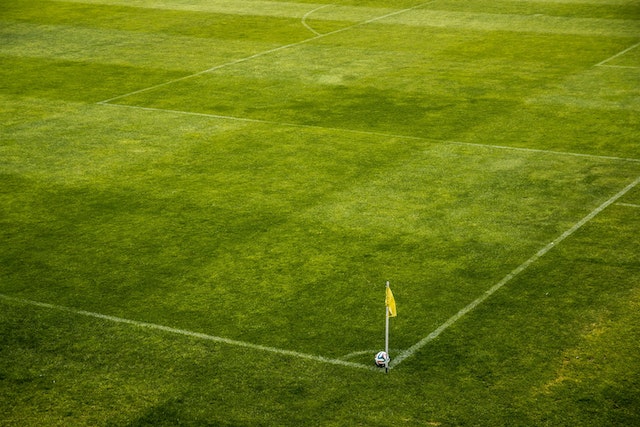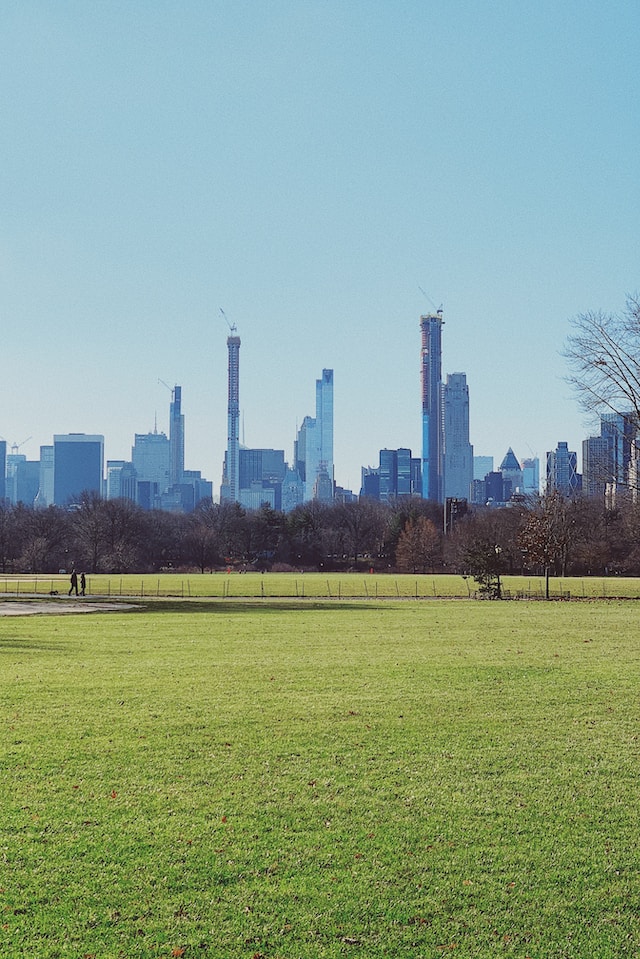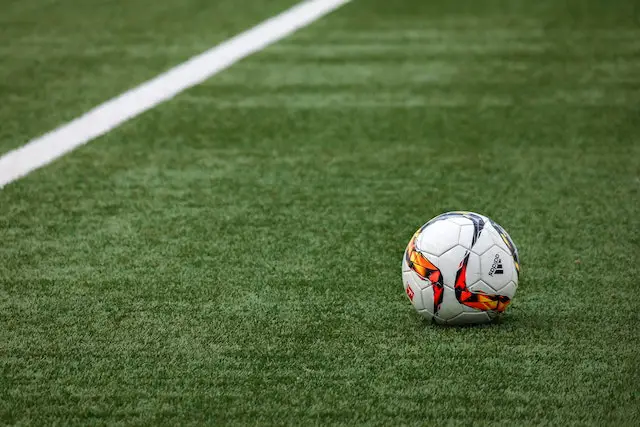Grass and turf are two different types of ground coverings. Grass is a natural choice for many homeowners due to its low cost, easy maintenance, and eco-friendliness. However, it requires continual care and may not be suitable for all climates or conditions.
What is turf?
(Photo by Pixabay)

Turf is a type of grass that has been specifically cultivated for use in sports and landscaping. Unlike regular grass, turf is grown to be thicker, more durable, and better suited for high-traffic areas. It’s made up of multiple layers, including a base layer of compacted soil or gravel, followed by layers of sand and rubber infill (usually made from recycled tires), and finally the synthetic grass fibers themselves.
One advantage of turf is its ability to withstand heavy usage without becoming damaged or worn out. This makes it ideal for use on playing fields where athletes are constantly running back and forth, as well as in parks and other public spaces that see a lot of foot traffic. Additionally, because turf doesn’t require watering or mowing like traditional grass does, it can save time and money on maintenance costs.
However, there are also some downsides to using turf. For one thing, it can get very hot in direct sunlight due to the materials used in its construction (especially black rubber infill). Some people also argue that artificial surfaces may increase the risk of certain injuries over natural surfaces.
If you’re looking for an easy-to-maintain option that can handle heavy usage without losing its lush appearance over time – then turf may be just what you need!
What is grass?
(Photo by Sergei Wing on Unsplash )

Grass is a common plant found in almost all parts of the world. It belongs to the Poaceae family and is characterized by its narrow leaves, hollow stems, and fibrous roots. Grasses have been used for thousands of years as food for grazing animals like cows and sheep.
There are several types of grass that differ in their appearance, growth habits, and environmental preferences. Some grasses thrive in cool climates while others prefer warmer temperatures. Grass can be found growing wild on hillsides or cultivated in lawns and parks.
Grass plays an important role in the ecosystem by providing food and shelter for many animals such as rabbits, deer, birds and insects. Additionally, it helps prevent soil erosion by stabilizing soil with its extensive root system.
Grass also has numerous benefits when grown as a lawn including enhancing the aesthetic value of landscapes while reducing heat buildup during hot summer months. However, maintaining a healthy lawn requires proper watering, fertilization and mowing which can be time-consuming for homeowners.
Turf Vs. Grass – Key differences
When it comes to deciding between using natural grass or artificial turf for your lawn, there are a few key differences to consider. One of the most significant differences is maintenance. Grass requires regular watering, mowing, and fertilizing to keep it healthy and thriving. Turf, on the other hand, is virtually maintenance-free once installed.
Another major difference is durability. Natural grass can become damaged easily due to weather conditions or heavy foot traffic. Artificial turf can withstand much more wear and tear without showing signs of damage.
Cost is also a consideration when choosing between grass and turf. While natural grass may have lower upfront costs, the ongoing expenses associated with maintaining it can add up quickly over time. On the other hand, while installing artificial turf can be expensive initially, its minimal maintenance requirements make it a cost-effective option in the long run.
Aesthetic appeal should be taken into account as well. Natural grass has an undeniable beauty that many people find appealing in their yards or landscaping projects. However, some modern varieties of artificial turf look very similar to real grass and offer additional benefits such as consistent coloration throughout all seasons.
The advantages and disadvantages of grass
Grass is the natural option for lawns, parks and gardens. It has several advantages that make it a popular choice among homeowners. For starters, grass is known to be more aesthetically pleasing than turf. The natural green color of grass adds an organic feel to any landscape.
Grass also has environmental benefits as it helps in purifying the air by producing oxygen and absorbing carbon dioxide from the atmosphere. This makes it a great choice for those who are conscious about their carbon footprint.
Moreover, maintaining a grass lawn can be cost-effective in the long run as compared to installing turf since grass only requires regular mowing, watering and fertilizing.
However, there are some disadvantages associated with having a grass lawn. One major drawback is its high maintenance requirements especially during hot summer months when frequent watering may be necessary to keep it looking lush and healthy.
Grass lawns also require careful attention when choosing appropriate species because different types thrive in different conditions such as shade or sun exposure which may not always suit every location.
Additionally, Grass allergies can pose a significant problem for people allergic to pollen or other allergens present in the environment which could lead to respiratory problems like asthma attacks or hay fever.
The advantages and disadvantages of turf
Turf has become an increasingly popular alternative to natural grass for a variety of reasons. One advantage is that it requires less maintenance and watering than traditional grass, making it more environmentally friendly. Additionally, turf provides a consistent playing surface for sports like football and soccer, which can help prevent injuries caused by uneven terrain.
However, there are also some disadvantages to using turf. For one, artificial turf isn’t biodegradable and can take hundreds of years to break down in landfills after its life cycle ends. The heat absorption rate of turf also tends to be higher than that of natural grass, leading to potentially dangerous temperatures on hot days.
Another disadvantage is the cost associated with installing and maintaining artificial turf compared to natural grass. While initial installation costs may be high for natural grass fields due to soil preparation and seeding requirements, ongoing maintenance costs tend to be lower over time.
Ultimately, each option has its advantages and disadvantages depending on the specific needs and circumstances involved. Careful consideration should be given before choosing between these two options for any particular application or project.
Is turf safer than grass?
When it comes to safety, the debate between turf and grass has been ongoing for years. Some argue that turf is safer because it provides a consistent playing surface with fewer divots and bumps. Others believe that grass is safer because it has more cushioning and absorbs impact better than artificial surfaces.
Studies have shown mixed results regarding the safety of turf vs. grass. In some cases, injuries on turf have been found to be less severe than those sustained on natural grass fields. However, other studies suggest that certain types of injuries may be more common on turf due to its harder surface.
It’s worth noting that advances in technology have led to the development of newer types of synthetic turf that are designed to mimic the feel and performance of real grass while also reducing injury risk.
Ultimately, whether or not one surface is inherently “safer” than the other depends on a variety of factors such as field maintenance practices, weather conditions, player behavior, and individual player characteristics like weight and speed.
Why do stadiums use turf?
Stadiums are often seen as the pinnacle of sports venues. They are designed to provide a great experience for fans while also giving athletes an optimal playing environment. One aspect of this is the surface on which they play, whether it’s grass or turf.
Many stadiums use turf because it has a number of advantages over natural grass. First and foremost, turf is much easier to maintain than grass. It doesn’t require watering or mowing, and can be used year-round without any significant wear and tear.
In addition to being low-maintenance, turf provides a consistent playing surface that allows athletes to perform at their best. This is particularly important in sports like football where the ball needs to bounce predictably off the ground.
Turf also offers more customization options than natural grass does. For example, some stadiums have logos or designs painted onto the field for special events.
Despite all these benefits, there are still some disadvantages associated with using turf in stadiums. The most notable one is safety concerns; many players believe that artificial surfaces increase their risk of injury compared to grass fields.
It’s clear why stadiums continue to choose turf over traditional natural grass: it’s simply a better option when you consider all aspects of maintaining an optimal playing surface for both athletes and spectators alike.
Featured Image By – Photo by Pixabay







